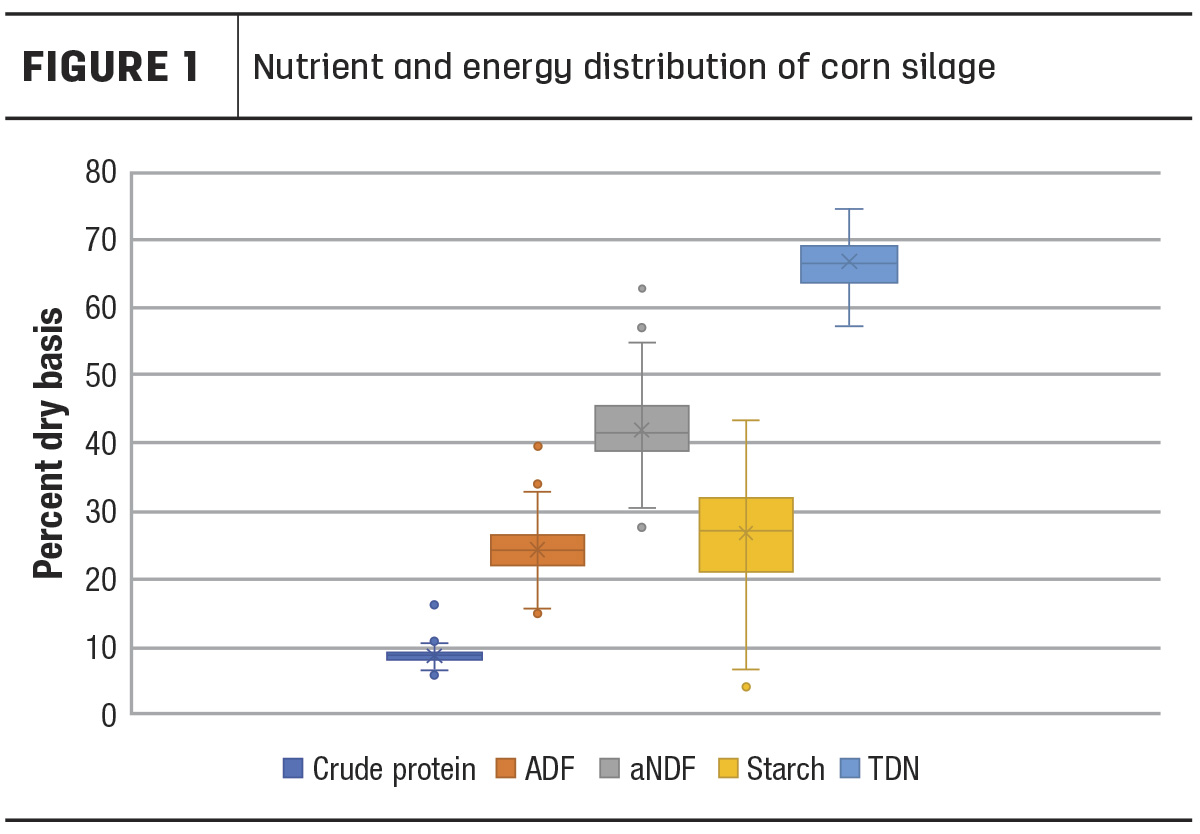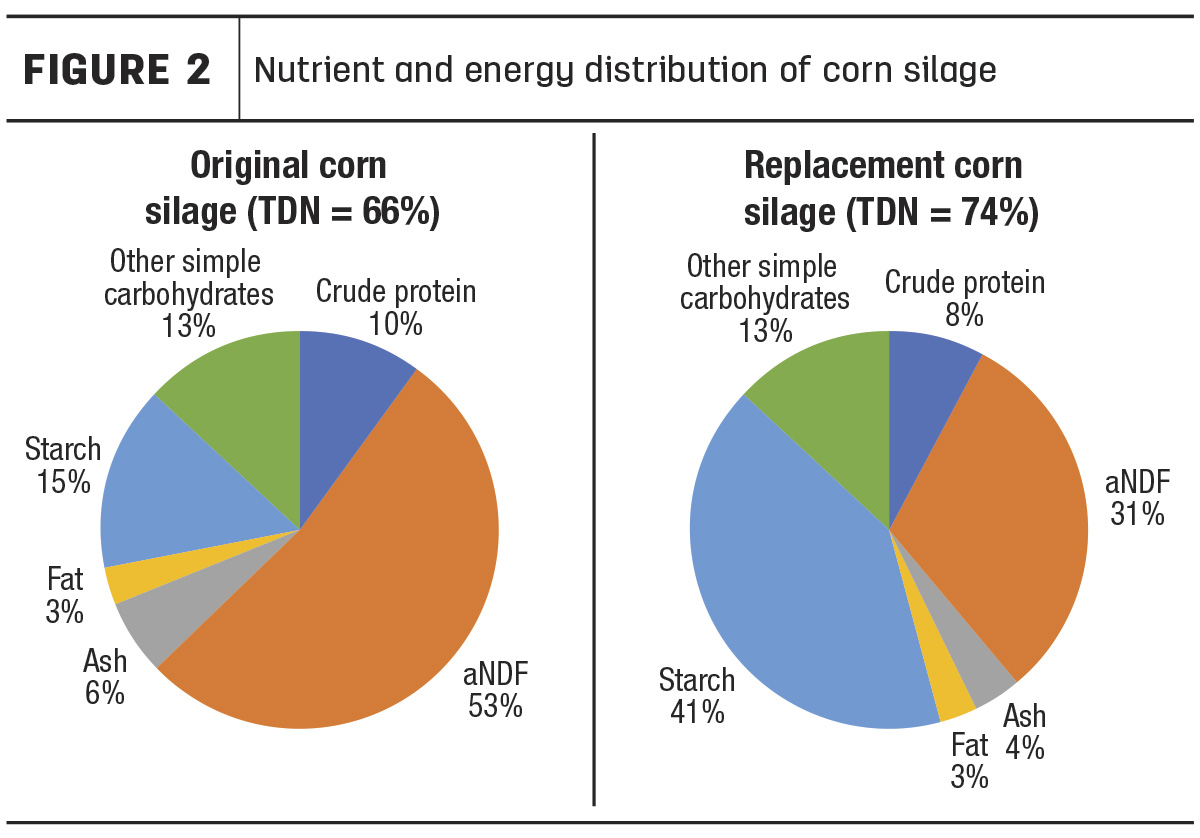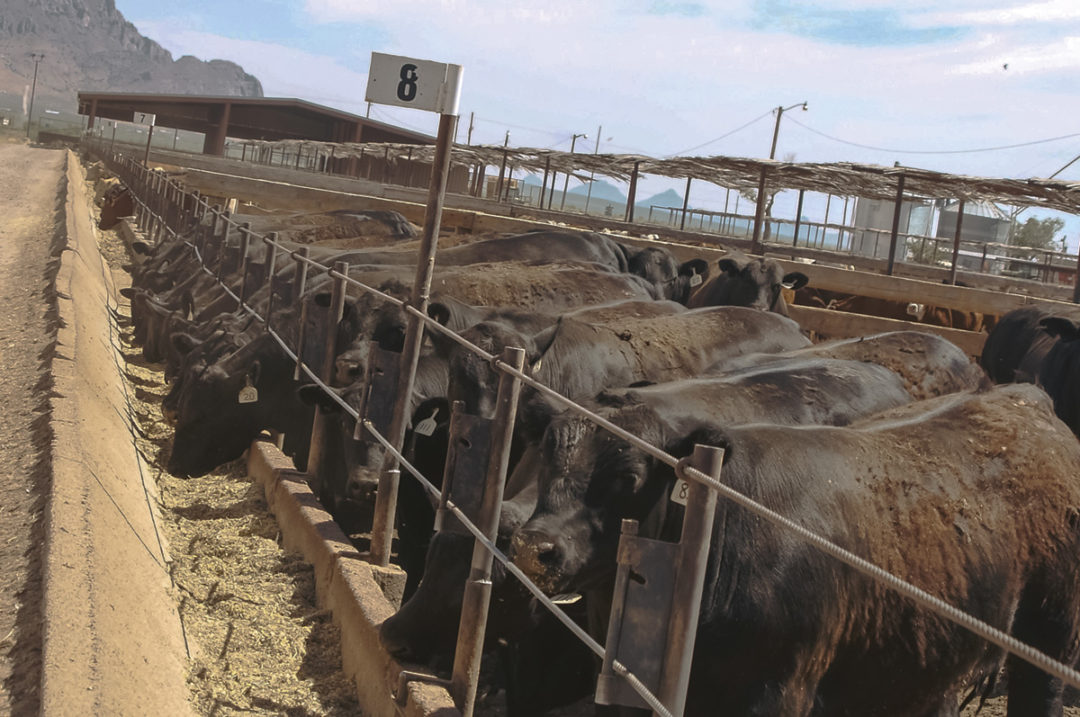In the dairy industry, corn silage is often fed to gestating and lactating cows. In big dairy states such as Wisconsin, New York, Pennsylvania and Minnesota, corn silage production and feeding has been optimized by forage and dairy producers alike. Conversely, in beef country, corn silage is typically reserved for feedlots filled with finishing steers with the aid of professional nutritionists. However, in years where forage, especially quality hay is scarce such as last year, beef cow producers may turn to drylotting and feeding corn silage as a part of their beef cow diets. While this is a great strategy to retain your cows through a drought, there are a few considerations beef cow-calf operators should keep in mind.
First is the quality of the silage. Often, in these scenarios, the corn silage available is less than optimal. Last growing season, corn producers with failed corn crops turned to corn silage as an alternative to harvesting their dryland acres for grain. Many dryland acres had stunted growth or low kernel production due to drought conditions here in Nebraska and surrounding states. On the positive side, that means the forage portion of the silage is typically of higher quality, being less mature. However, as far as corn silage is concerned, the value is really in the grain. Drought-stunted corn silage is going to have less grain.
Additionally, when silage is put up by producers who don’t do it every season, more management errors are made. Processing, packing and sealing are all key factors along with moisture that producers must get right to ensure proper ensiling of the forage. When feeding out, I always recommend producers check the pH to ensure there is a low risk of mold and mycotoxin issues.
Nutrient distribution
Because of the many growing and harvesting factors that can affect corn silage, it is a variable feed. Specifically, some have more corn grain than others, such as the drought-stunted silage mentioned above. This, in turn, affects nutrient concentrations. Starch will be higher in high grain with fibers being lower in those same silages. Figure 1 shows the nutrient distribution of key nutrients and energy in corn silage samples submitted to Ward Laboratories Inc. from Nebraska and surrounding states in August 2022 through February 2023 and analyzed by NIRS Forage and Feed Testing Consortium calibrations (n = 180).

There is variability across all the nutrients and energy. However, starch is the most variable, ranging from 6.5% to 43% on a dry basis. This demonstrates the large differences in grain content corn silage can have. Fiber and energy concentrations are also notable and impact how the silage should be fed out. This variability impacts the feeds that should be fed with the silage. High-energy silages may need a low-quality roughage to induce scratch factor, and lower-energy silages may even require more concentrate supplementation when fed to lactating beef cows.
When examining what nutrients impact total digestible nutrients (TDN, energy) in corn silage, starch (R2 = 0.70) was the predominant nutrient. Not surprisingly, amylase-treated neutral detergent fiber (R2 = 0.65), acid detergent fiber (R2 = 0.62), and digestible NDF at 48 hours (R2 = 0.61) also impacted the energy level in the silage. Since fibers are displaced when there is more starch and vice versa, it makes sense that with more starch and less fibers, corn silages have a higher TDN value, and with more fiber corn silages have a lower TDN value.
A case of acidosis
Recently, a producer called and described her cattle as being unthrifty, “bloaty” and having a reduced appetite. The producer was inquiring about microbial pathogen tests such as listeria. She mentioned that they had recently switched silages and believed there was a pathogen to be blamed. However, we determined it wasn’t a pathogen problem but a feed management issue.
We examined the two corn silage sample analysis side by side (Figure 2). It was clear the large differences in starch and aNDF between the two samples meant there should have been adjustments when feeding the second silage. When the producer switched from feeding the original silage to the replacement, they had not considered the reported nutrient differences. The producer continued feeding the silage at the same inclusion rate. So the symptoms she had observed in her cattle were due to higher levels of starch and less fiber, resulting in acidosis in her beef cows.

When we feed corn silage as part of our beef cow ration, we need to consider this as a mixed feed containing both forage and grain. In the rumen, there are microbes which excel at digesting forages or high-fiber diets, and there are microbes that excel at digesting sugars or simple carbohydrates. The balance of these microbes determines if the cow can handle a high-concentrate diet.
It is standard practice when adding corn, distillers or other high-energy feeds to the diet to use a series of "step-up" rations to get the cattle on to the high-energy final ration. This allows the rumen populations to shift from fiber fermenters such as cellulolytic bacteria to amylolytic bacteria and protozoa which thrive on highly soluble carbohydrates. Without these step-up rations, acidosis can occur, impacting cattle performance and health.
When we feed corn silage as part of our beef cow ration, we need to consider this as a mixed feed containing both forage and grain. When the producer fed the corn silage in the ration at the same inclusion rate, jumping from just 15% starch to 40% starch, the rumen microbes were not given enough time to adapt. In this case, the simple carbohydrates were more than doubled. With a jump in readily available carbohydrates comes a decrease in rumen pH, resulting in acidosis.
In conclusion, corn silage is highly variable, especially when produced under drought conditions. Because of the corn grain component of this forage, it should be treated as a mixed feed. When evaluating corn silage reports, key nutrients to consider are protein, fibers, fiber digestibility and particularly starch. All these nutrients can give producers insights regarding how to feed a new pile of silage. High-starch silages will be low in fiber and high in energy. Step-up rations may be required to allow rumen microbes to acclimate. Low-starch silage will be high in fiber and may require more grain supplementation to reach energy requirements for production goals when fed as part of a beef cow diet.










